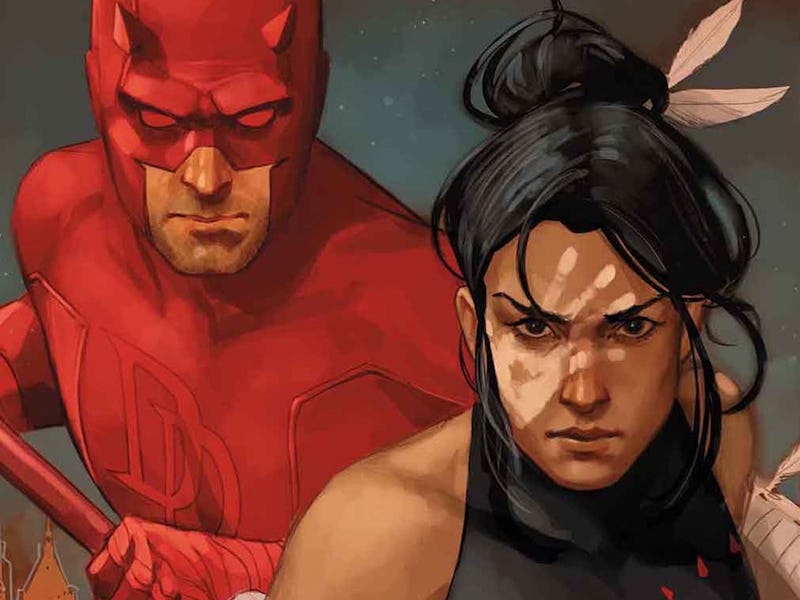Echo Changes Its Source Material to Tell “A More Authentic Story”
The cast and crew discuss the new series’ approach to the MCU’s first Deaf and Indigenous hero.

When Maya Lopez, aka Echo, first appeared in Daredevil #9 back in December 1999. She made a resounding splash. Introduced as a Deaf, piano-playing, boxing, Indigenous person whose hobbies included weekly theater performances and missions from Kingpin, Echo was a great female role model and foil to the blind Matt Murdock.
But while her comic appearance was groundbreaking, it was far from perfect, which is something that Echo series director Sydney Freeland readily admits.
“In the comic books, in that first Daredevil run, Maya Lopez is introduced as a member of the Blackfeet tribe, but she's Blackfeet in name only,” Freeland tells Inverse. “There aren't specifics of her culture or her language or her traditions. And there's a lot of Native American iconography that's used in that comic book run that is beautiful to look at, but it's arbitrary.”
So in bringing the comics to the screen, Freeland wasn’t looking to adapt the comics: she wanted to fix them.
Echo director Sydney Freeland took steps to make sure the Deaf and Indigenous representation was even better than it was in the comics.
Freeland, a Navajo filmmaker, wanted to narrow Maya’s identity to a specific tribe in order to portray one community accurately — instead of multiple cultures arbitrarily. In Echo, Maya is revealed to be a member of the Choctaw nation in Oklahoma.
“As somebody who's Indigenous, I'm looking at [the comics,] I'm saying, ‘Oh, that's ancestral Puebloan from the Southwest US. That's maybe Inuit from up by Northern Alaska maybe. That's Six Nations from New York.’ It was just a bunch of cool imagery that was selected,” Freeland says.
Freeland had a similar perspective on how Maya presents as a Deaf character. In the comics, Echo can read lips flawlessly, making it easier to show her interacting with non-signing characters. Echo’s Maya relies much more on ASL, which is far more accurate.
“Even the best lip readers in the world can only understand about 30 percent of what's being said,” she says. “And so for us, it was more about trying to tell a more authentic story.”
Echo is the first Marvel Cinematic Universe show to be released under the “Marvel Spotlight” label.
Devery Jacobs, who shares the emotional weight of Maya’s childhood as her cousin Bonnie, recently joined the MCU as Mohawk hero Kahhori in What If...? Season 2. In her second Indigenous Marvel role in as many months, she hopes it’s a sign of a sea change in high-profile Indigenous storytelling.
“There is such an appetite for our stories and there's such a wealth of knowledge and culture and history and legends that we are brimming to tell,” Jacobs says.
In creating the world of Echo, Freeland went beyond just telling the stories of the Choctaw, she went straight to the source.
“Usually, integrating or incorporating Native American experts is almost done as an afterthought, Freeland says, “or it's done as a rubber stamp and just saying ‘Hey, look at this script and just say it's okay.’ But it was important that we present this project to the Choctaw Nation early on.”
Freeland set out to do two things: First, actually get the permission of Choctaw leadership to portray the community at all. And second, create a complex Indigenous character with their help — one who sometimes feels more like a villain than a hero.
“We wanted to push the envelope,” she says, “But we wanted to define where the envelope was first and foremost.”